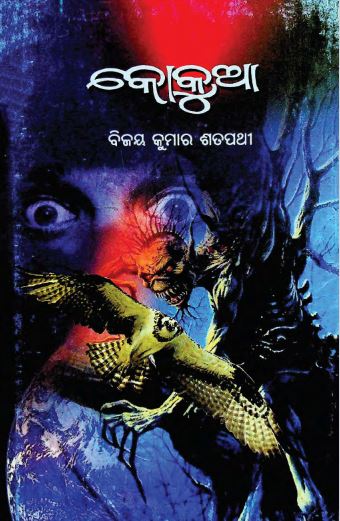Odia literature has always been known for its rich cultural heritage and its ability to tackle complex social issues. One such book that stands out is “Kokua” by Bijay Kumar Satapathy, published in 2017. This Odia drama book is a gripping portrayal of the lives of Maoist tribals and their struggles against the system. In this post, we will delve into the world of “Kokua” and explore its significance in Odia literature.
The title “Kokua” translates to “Unity” in Odia, and the drama is a powerful exploration of the unity and solidarity that exists among the Maoist tribals. The story revolves around a group of tribals who are fighting against the system and seeking justice for their community. The drama is set against the backdrop of the Maoist movement in Odisha, which has been a significant issue in the state for several decades.
The characters in the drama are well-crafted, with each one bringing to life the struggles and triumphs of the Maoist tribals. The protagonist, Kokua, is a young tribal woman who is determined to fight for her community’s rights. Her character is a testament to the strength and resilience of the Maoist tribals, who have been fighting against the system for years.
One of the standout features of the book is its exploration of the social and economic issues faced by the Maoist tribals. The drama highlights the struggles of the tribals, who are fighting against poverty, exploitation, and oppression. The book is a powerful portrayal of the struggles of the tribals and their determination to fight for their rights.
The book is also notable for its use of Odia language and culture. The author, Bijay Kumar Satapathy, has used the Odia language to create a sense of authenticity and to bring the story to life. The drama is filled with Odia idioms, phrases, and cultural references, which add to the book’s authenticity and make it a valuable resource for readers who want to learn more about Odia culture.
The book’s layout and design are also noteworthy, with clear headings, concise paragraphs, and relevant illustrations that enhance the reader’s experience. The inclusion of a foreword and introduction provides additional context and background information, making the book a valuable resource for readers who want to delve deeper into the world of Odia literature and culture.
In conclusion,Kokua is a remarkable book that explores the lives of Maoist tribals and their struggles against the system. The drama is a powerful portrayal of the unity and solidarity that exists among the tribals, and its use of Odia language and culture makes it a valuable resource for readers who want to learn more about Odia culture. The book is a must-read for anyone interested in Odia literature, drama, and culture, and its historical accuracy and well-crafted characters make it a valuable resource for scholars and students alike.
As we close this post, we are reminded of the importance of preserving our cultural heritage and sharing it with a wider audience. “Kokua” is a shining example of this, and we hope that it will inspire readers to learn more about the rich cultural traditions of Odisha.
Books Info
| Books name | Kokua |
| Author | Bijay Kumar Satapathy |
| No Of pages | 92 |
| Publisher | Agraduta |
| Publication | 1980, 1984, 2e. |
| Printed At | Rubi Offset |
| Distributor | NA |

